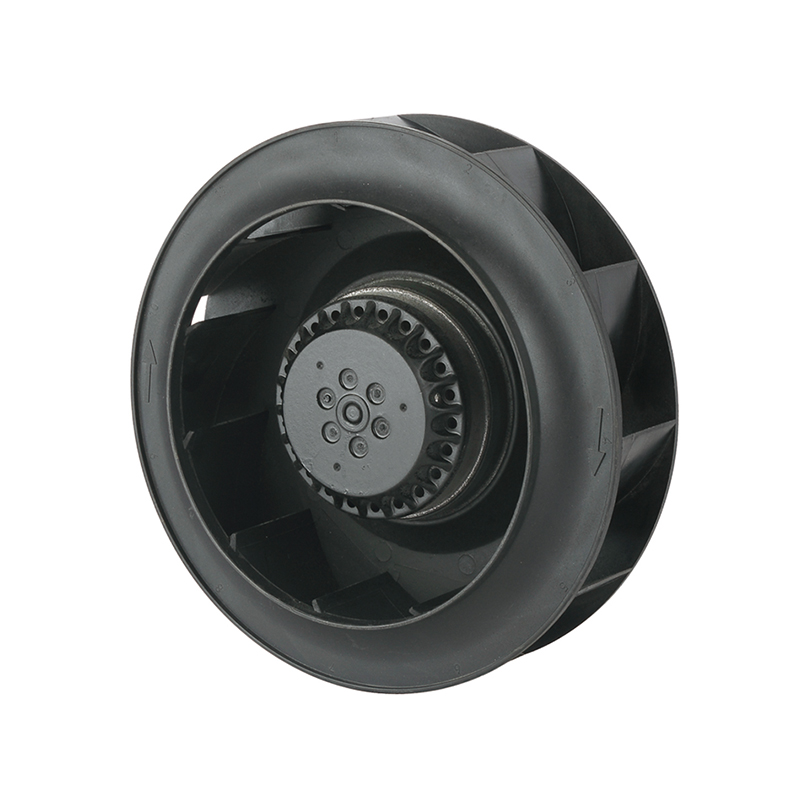Qinlang focuses on providing high-quality products and considerate services, and is committed to meeting every expectation of our customers.
The DKT-133 Cooling Ventilation Double Inlet Air Conditioning Fan is d...
See DetailsIn modern HVAC systems, industrial ventilation, and air handling units, choosing the right fan design is crucial for ensuring operational efficiency and energy savings. Among the various fan configurations available today, the backward curved blower has become a preferred option, particularly for systems operating under high static pressure conditions. This preference is not coincidental—it is rooted in the fundamental design, aerodynamic efficiency, and performance advantages of the backward curved blower and its related configurations such as the backward curved blade fan and the backward curved centrifugal blower.

A backward curved blower is distinguished by the way its impeller blades are shaped and oriented. Unlike forward-curved or radial blade fans, the blades of a backward curved blower angle away from the direction of the fan's rotation. This design significantly improves efficiency and reduces energy consumption. In high static pressure environments, such as ducted ventilation systems, cleanroom exhausts, and filtration setups, the backward curved blower maintains a consistent and stable airflow even when resistance increases, which is vital for system reliability.
Another critical reason the backward curved blower is favored is its non-overloading power characteristic. As pressure increases, the power required to drive a backward curved blower plateaus, reducing the risk of motor overloading and system failure. This makes it an ideal choice for applications where pressure levels may fluctuate or be unpredictable. The aerodynamic design of a backward curved blower also contributes to quieter operation compared to other fan types, making it suitable for environments where noise control is essential.
The backward curved blade fan is a common configuration found in both commercial and industrial HVAC systems. It combines the high-pressure capabilities of centrifugal fans with the energy efficiency of axial designs. This unique blend of features allows the backward curved blade fan to move large volumes of air against high resistance with minimal noise and energy consumption. Its compact construction also makes it easier to install in tight spaces without compromising on airflow performance.
Furthermore, the backward curved blade fan is inherently self-cleaning to a degree, as the shape of the blades discourages the buildup of dust and particles. This results in lower maintenance requirements and improved long-performance. In systems that demand continuous operation, such as hospital air supply units and laboratory fume hoods, the durability and reliability of the backward curved blade fan become significant advantages.
On the industrial side, the backward curved centrifugal blower is engineered to deliver exceptional pressure handling and durability. It is widely used in industrial process applications, air pollution control equipment, and boiler combustion air systems. The backward curved centrifugal blower provides stable performance across a wide range of static pressures and is well-suited for heavy-duty tasks that demand constant airflow under harsh conditions.
The backward curved centrifugal blower also stands out for its ability to manage airflow in systems that require filtration or high resistance due to complex ducting layouts. It offers a favorable power-to-performance ratio, meaning it can deliver high pressure without excessive energy consumption. This makes the backward curved centrifugal blower an environmentally friendly and cost-effective solution in the long run.
In conclusion, the backward curved blower, backward curved blade fan, and backward curved centrifugal blower are top-tier choices for systems operating in high static pressure environments. Their aerodynamic efficiency, power stability, low noise levels, and minimal maintenance needs make them highly reliable and cost-effective. As energy efficiency and performance demands continue to rise in both commercial and industrial sectors, these backward curved technologies are poised to remain indispensable for future air movement applications.